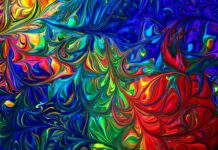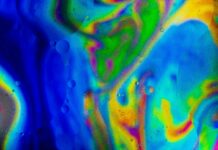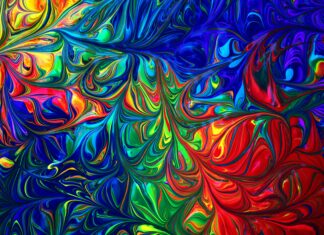Artificial Intelligence (AI) and Non-Fungible Tokens (NFTs) are two transformative technologies that have gained significant attention in recent years. AI, a branch of computer science, focuses on the development of intelligent machines capable of performing tasks that typically require human intelligence. NFTs, on the other hand, are unique digital assets that can represent ownership or proof of authenticity for various forms of digital or physical objects. The convergence of AI and NFTs has given rise to an exciting new concept known as AI NFTs, where AI is used to generate, enhance, or interact with NFTs in innovative ways.
AI NFTs represent a novel intersection of two rapidly evolving fields, offering unique opportunities for creators, collectors, and enthusiasts alike. By leveraging the power of AI, NFTs can be imbued with enhanced artistic, generative, or interactive capabilities. For instance, artists can utilize AI algorithms to generate entirely new and unique digital artworks that can be tokenized as NFTs. This fusion of AI and NFTs opens up a world of creative possibilities, allowing artists to explore uncharted territories and push the boundaries of traditional art forms.
One of the significant advantages of AI NFTs lies in their potential to revolutionize the way we perceive and appreciate art. With AI algorithms at the helm, artists can experiment with new styles, techniques, and mediums, transcending the limitations of human imagination. By training AI models on vast amounts of data, artists can create algorithms that generate stunning visuals, intricate patterns, and even surreal compositions that may have been unimaginable otherwise. These AI-generated artworks can be tokenized as NFTs, providing a means for artists to monetize their creations and establish ownership rights in the digital realm.
Moreover, AI NFTs can introduce a dynamic and interactive element to the world of digital art. AI algorithms can be designed to respond to user inputs, allowing viewers to influence or shape the artwork in real-time. This interactive nature adds an immersive and participatory dimension to the art-viewing experience, enabling users to engage with the artwork on a more profound level. AI NFTs can become living, evolving creations that adapt and respond to the preferences and interactions of their audience, creating a dynamic relationship between the artwork and its viewers.
The integration of AI and NFTs also presents exciting possibilities for the gaming industry. AI algorithms can be employed to generate intelligent, autonomous characters or non-playable characters (NPCs) that possess advanced behavioral and decision-making capabilities. These AI-driven NPCs can be tokenized as NFTs, enabling players to own and trade unique virtual entities that can enhance their gaming experiences. The ownership of AI NFTs in gaming can provide players with exclusive in-game benefits, rare collectibles, or even the ability to participate in the development and evolution of the game’s virtual world.
Beyond the realms of art and gaming, AI NFTs can also have applications in domains such as virtual reality, augmented reality, and digital fashion. AI algorithms can be utilized to create lifelike virtual environments or enhance existing ones, enriching the immersive experiences offered by virtual and augmented reality technologies. In the realm of digital fashion, AI NFTs can be used to design and customize virtual garments, accessories, or avatars, allowing individuals to express their unique style and identity in the digital space.
However, the rise of AI NFTs also raises important questions and challenges. One of the primary concerns is the issue of copyright and intellectual property rights. As AI algorithms generate artworks, determining the ownership and authorship becomes a complex matter. Who owns the rights to an AI-generated artwork? Is it the artist who created the algorithm, the person who trained the AI model, or the AI itself? Addressing these legal and ethical questions surrounding AI-generated content will be crucial for the widespread adoption and acceptance of AI NFTs.
Additionally, the environmental impact of AI NFTs has been a subject of debate and scrutiny. The process of minting and trading NFTs, particularly on blockchain platforms, can consume significant amounts of energy. The computational power required for AI algorithms to generate and process complex artworks further exacerbates this issue. As the demand for AI NFTs grows, finding sustainable solutions that minimize the carbon footprint associated with their creation and transaction will be imperative.
AI NFTs represent a captivating convergence of AI and NFT technologies, offering novel opportunities for artists, collectors, gamers, and enthusiasts. The integration of AI algorithms with NFTs allows for the creation of unique and generative artworks, immersive gaming experiences, and innovative applications in virtual reality, augmented reality, and digital fashion. However, challenges related to copyright, intellectual property, and environmental impact need to be addressed to ensure the responsible and sustainable growth of AI NFTs. As these technologies continue to evolve and mature, the future holds immense potential for the transformative power of AI NFTs in shaping the digital landscape.
Furthermore, the emergence of AI NFTs has sparked a new wave of collaborations between artists and AI developers. Artists are increasingly partnering with AI experts to harness the capabilities of machine learning algorithms and neural networks in the creation of unique and captivating artworks. These collaborations often result in the fusion of human creativity and computational intelligence, leading to groundbreaking artistic expressions that captivate audiences and challenge traditional notions of art.
The AI NFT ecosystem has also given rise to dedicated platforms and marketplaces where artists can showcase and sell their AI-generated NFTs. These platforms provide a curated space for AI artists to connect with collectors and enthusiasts who are eager to explore and acquire cutting-edge digital creations. By leveraging blockchain technology, AI NFT platforms ensure transparency, security, and provenance, allowing artists to establish the authenticity and ownership of their artworks in a decentralized manner.
Moreover, the integration of AI into NFTs opens up avenues for data-driven insights and analytics. With AI algorithms analyzing the vast amount of data associated with NFT transactions and interactions, valuable insights can be gleaned regarding market trends, collector preferences, and the overall impact of AI NFTs on the digital economy. These data-driven insights can empower artists, collectors, and platform operators to make informed decisions, refine their strategies, and optimize their engagement with the AI NFT ecosystem.
It is also worth noting that the potential applications of AI NFTs extend beyond the realm of art and collectibles. AI NFTs can be leveraged in domains such as finance, healthcare, and education. For instance, in finance, AI NFTs can represent unique digital assets that encapsulate financial instruments or investment opportunities. These AI-driven financial NFTs can enable decentralized and programmable financial products, facilitating automated trading, lending, and asset management.
In the healthcare sector, AI NFTs can contribute to advancements in medical research, drug discovery, and personalized medicine. AI algorithms can analyze vast datasets of patient information, genomic data, and medical literature to generate valuable insights and predictive models. These AI-generated insights can be tokenized as NFTs, allowing researchers and healthcare professionals to access and exchange valuable medical knowledge securely.
In the realm of education, AI NFTs can revolutionize the way knowledge and educational resources are accessed and distributed. AI algorithms can generate personalized learning materials, adaptive tutoring systems, and interactive educational experiences that cater to individual students’ needs and learning styles. These AI-driven educational NFTs can empower learners, educators, and institutions to create, share, and monetize educational content in a decentralized and accessible manner.
As AI NFTs continue to evolve, it is essential to address the ethical considerations associated with their development and deployment. Ensuring transparency and accountability in AI algorithms is crucial to avoid biases, discrimination, or unethical manipulation of data. Additionally, the inclusivity and accessibility of AI NFT platforms should be prioritized to ensure that artists from diverse backgrounds can participate and thrive in the AI NFT ecosystem.
In conclusion, AI NFTs represent a transformative fusion of AI and NFT technologies that hold immense potential across various domains. From the creation of AI-generated artworks to immersive gaming experiences, from virtual reality to personalized medicine, AI NFTs are reshaping how we create, interact with, and derive value from digital assets. As the field of AI NFTs continues to evolve, addressing legal, ethical, and environmental challenges will be crucial for realizing the full potential of this innovative intersection of technologies. By embracing responsible and sustainable practices, AI NFTs can revolutionize industries, empower creators, and enrich our digital experiences in unprecedented ways.


















